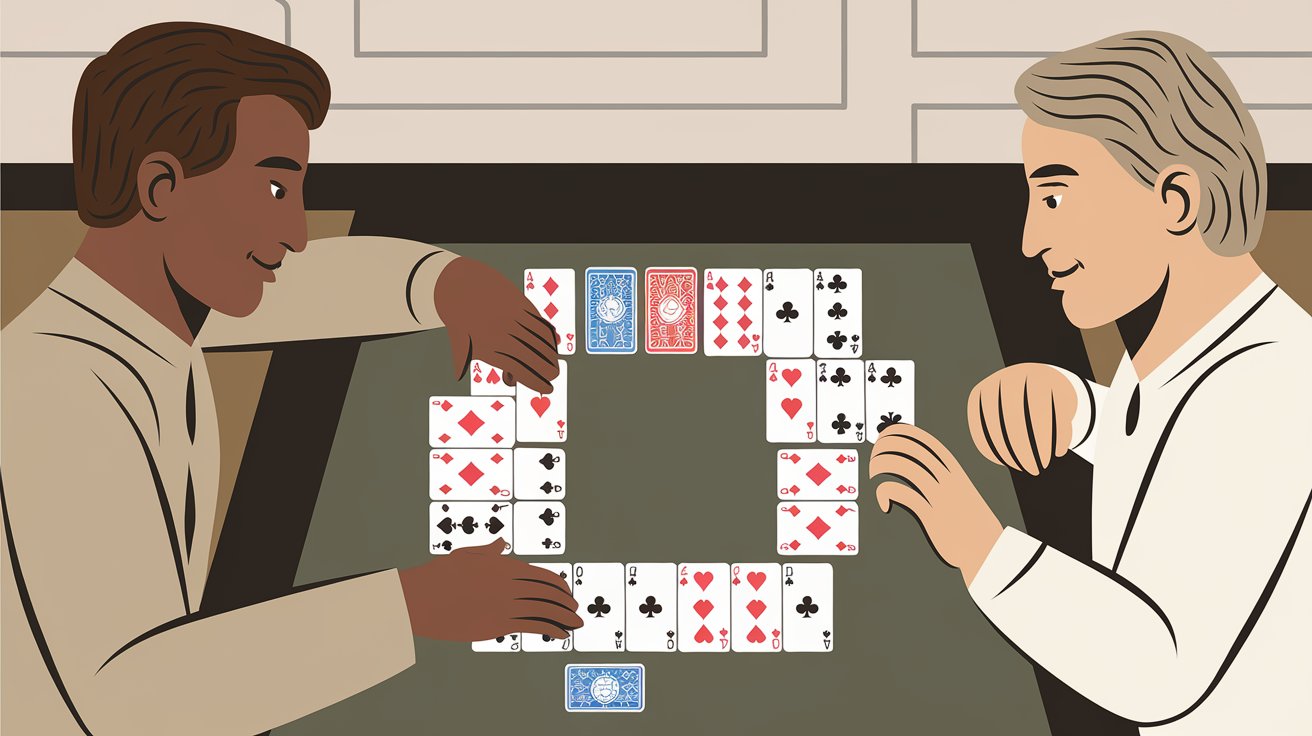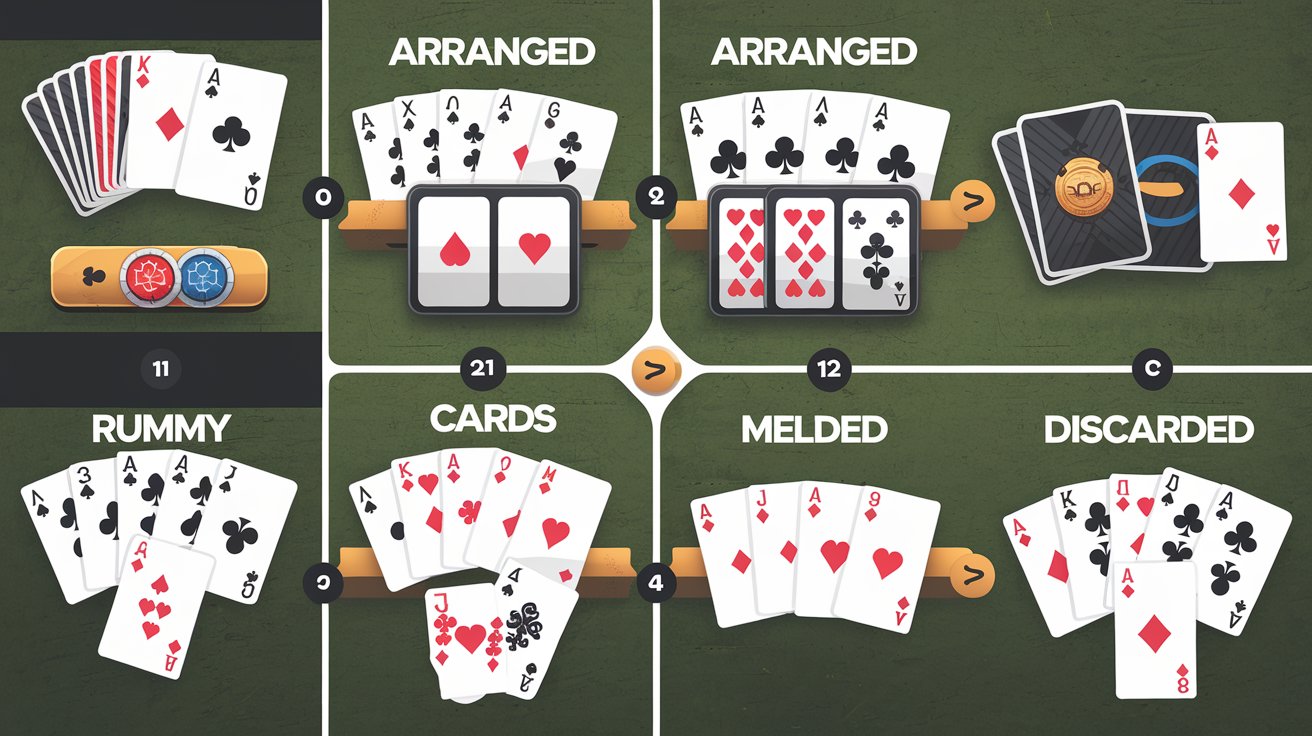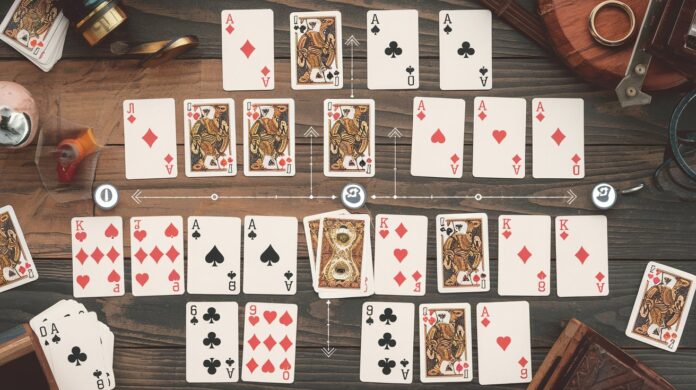If you’re looking for a fun, strategic card game that’s easy to learn yet endlessly entertaining, rummy might just be your next obsession. Whether you’re gathering with friends for game night or testing your skills online, rummy combines luck, skill, and a dash of excitement. But if you’re new to the game, the rules might seem intimidating at first. Don’t worry—this step-by-step guide will break down everything you need to know about how to play rummy, from the basics to pro-level tips. By the end, you’ll be shuffling cards like a seasoned player!
In this blog, we’ll cover the essentials of rummy rules, explain how to set up a game, walk you through gameplay, and share strategies to help beginners win their first round. Let’s dive into the world of rummy and get you ready to play!
What Is Rummy? A Quick Overview

Rummy is a classic card game where the goal is to form sets and runs using the cards in your hand. Played with a standard deck of 52 cards, it’s popular worldwide in various forms, like Gin Rummy, Indian Rummy, and Rummy 500. The version we’ll focus on here is the basic rummy game—perfect for beginners and adaptable to most variations.
The objective? Be the first player to “go out” by arranging all your cards into valid combinations and discarding your last card. It’s simple once you get the hang of it, but it’s packed with strategy to keep you coming back for more.
Keywords: how to play rummy, rummy rules, card game for beginners
Step 1: Gather Your Supplies and Players
Before you can learn how to play rummy, you’ll need to set the stage. Here’s what you need:
- A Standard Deck of Cards: Use one 52-card deck for 2-4 players. For 5-6 players, grab two decks and include the jokers (they act as wild cards).
- Players: Rummy works best with 2-6 people. The more, the merrier—and the more chaotic!
- A Scorekeeper: Someone needs to track points. Paper and a pen will do the trick.
Once you’ve got your crew and cards, you’re ready to start. Shuffle the deck well—rummy’s all about randomness at the start!
Step 2: Understand the Card Values and Objective
To master rummy rules, you need to know what each card is worth and what you’re aiming for.
Card Values in Rummy
- Number Cards (2-10): Worth their face value (e.g., 5 of hearts = 5 points).
- Face Cards (Jack, Queen, King): 10 points each.
- Aces: 1 point (though in some variations, they can be high or low).
- Jokers (if used): 0 points, but they’re wild and can substitute for any card.
The Goal
Your mission is to arrange all your cards into:
- Sets: Three or four cards of the same rank (e.g., 7 of spades, 7 of hearts, 7 of clubs).
- Runs: Three or more consecutive cards of the same suit (e.g., 4, 5, 6 of diamonds).
Once you’ve melded all your cards into sets or runs, you discard your final card to “go out” and win the round. Any cards left in your opponents’ hands count as points against them.
Pro Tip: Memorizing card values early makes scoring a breeze—perfect for rummy beginners!
Step 3: Deal the Cards
Now that you know the goal, let’s get the game started.
- Choose a Dealer: Pick someone randomly for the first round. After that, the deal rotates clockwise.
- Deal the Cards:
- 2 players: 10 cards each.
- 3-4 players: 7 cards each.
- 5-6 players: 6 cards each.
- Set Up the Piles:
- Place the remaining cards face-down in the center—this is the draw pile.
- Flip the top card face-up next to it—this starts the discard pile.
Each player should keep their cards hidden from others. Sneaky peeks are a no-no in rummy!
Step 4: Learn the Gameplay Basics
Rummy is played in turns, moving clockwise around the table. Each turn has three simple steps: Draw, Meld (optional), Discard. Here’s how it works:
1. Draw a Card
Start your turn by picking one card. You’ve got two options:
- Draw Pile: Take the top card from the face-down stack (a mystery card!).
- Discard Pile: Take the top card from the face-up pile (you know what you’re getting, but so does everyone else).
2. Meld (Optional)
If you can, form sets or runs with the cards in your hand. You don’t have to meld right away—you can hold onto cards for a bigger play later. Melding means laying down your combinations face-up on the table for all to see.
- Example Set: 8 of spades, 8 of hearts, 8 of diamonds.
- Example Run: 9, 10, Jack of clubs.
You can also add cards to existing melds on the table (yours or others’) during your turn. This is called “laying off.”
3. Discard a Card
End your turn by placing one card from your hand onto the discard pile. Choose wisely—you don’t want to give your opponents something useful!
The game continues like this until someone “goes out” by melding all their cards and discarding their last one.
Keywords: rummy gameplay, rummy for beginners, step-by-step rummy rules
Step 5: Going Out and Scoring
The moment of triumph in rummy is “going out.” Here’s how it happens:
- You’ve melded all your cards into valid sets or runs (or laid them off on existing melds).
- You discard your final card to the discard pile.
- You declare, “I’m out!” (or just smirk victoriously).
Scoring the Round
- The player who goes out scores 0 points for that round.
- Other players add up the value of the cards still in their hands (unmelded cards only).
- Jokers or wild cards are worth 0 if left unmelded in some variations—check your house rules!
The game can end after one round, or you can play multiple rounds, tallying points until someone reaches a set total (like 100 or 200). The player with the lowest score wins!
Step 6: Master Rummy Variations
Once you’ve got the basics down, explore popular rummy variations to keep things fresh:
- Gin Rummy: Played with 2 players, 10 cards each, and a focus on “knocking” to end the round early.
- Indian Rummy: Uses 2 decks, 13 cards per player, and requires at least two runs (one must be a “pure” run without jokers).
- Rummy 500: Players aim to reach 500 points by melding and laying off cards over multiple rounds.
Each version tweaks the rules slightly, but the core of sets, runs, and discarding stays the same. Pick one that suits your group and dive in!
Tips and Tricks for Rummy Beginners

Ready to up your game? Here are some beginner-friendly strategies to help you win at rummy:
- Watch the Discard Pile: Notice what your opponents pick up—it reveals what they’re collecting.
- Hold Onto High Cards Early: Face cards are worth more points if you’re caught with them, so meld them first.
- Use Jokers Wisely: If you’re playing with wild cards, save them for tricky melds.
- Bluff a Little: Discard cards that mislead opponents about your strategy.
- Prioritize Runs: They’re easier to build and harder for opponents to disrupt.
Practice makes perfect, so don’t be discouraged if your first few games are a learning curve. Rummy rewards patience and observation.
Keywords: rummy tips, rummy strategy, how to win at rummy
Common Rummy Mistakes to Avoid
New players often trip over these pitfalls—steer clear to improve your game:
- Discarding Useful Cards: Don’t toss a card your opponent just picked up a match for.
- Melding Too Soon: Holding cards longer can give you a bigger meld later.
- Ignoring Opponents: Pay attention to their moves—they’re your biggest clue to winning.
- Forgetting the Rules: Keep this guide handy until you’re a rummy pro!
Why Rummy Is Worth Learning

Rummy isn’t just a game—it’s a social experience, a brain teaser, and a timeless tradition. It’s portable (just a deck of cards!), affordable, and adaptable to any group size. Plus, once you learn how to play rummy, you’ll have a skill you can take anywhere—from family gatherings to online platforms.
The mix of luck and strategy keeps every round exciting. You might draw the perfect card by chance, but it’s your decisions that seal the win. Ready to give it a shot?
How to Start Playing Rummy Today
You’ve got the rules, tips, and enthusiasm—now it’s time to play! Here’s your action plan:
- Grab a deck of cards and a few friends.
- Review the steps above and deal your first hand.
- Play a practice round to get comfortable.
- Tweak the rules (add jokers, adjust points) to suit your group.
If you’re solo, try an online rummy app or website—many offer tutorials and beginner-friendly matches. Search “play rummy online free” to find a platform that works for you.
Keywords: play rummy online, rummy for new players, start playing rummy
Final Thoughts on Rummy Rules
Learning how to play rummy is like unlocking a secret club—it’s simple once you’re in, but it takes that first step to get there. With this step-by-step guide, you’ve got everything you need to shuffle, deal, and meld your way to victory. Whether you’re aiming to impress friends or just enjoy a quiet night in, rummy’s got you covered.
So, what are you waiting for? Grab those cards, practice your poker face (even if it’s not poker!), and let the rummy fun begin. Got questions or a cool rummy story? Share it below—I’d love to hear how your first game goes!

Zareb Saleh is a journalist at Gulf Today and a ghostwriter for Gameoholic, specializing in gaming, technology, and digital culture. With a keen eye for industry trends, he delivers insightful stories that engage and inform readers.




